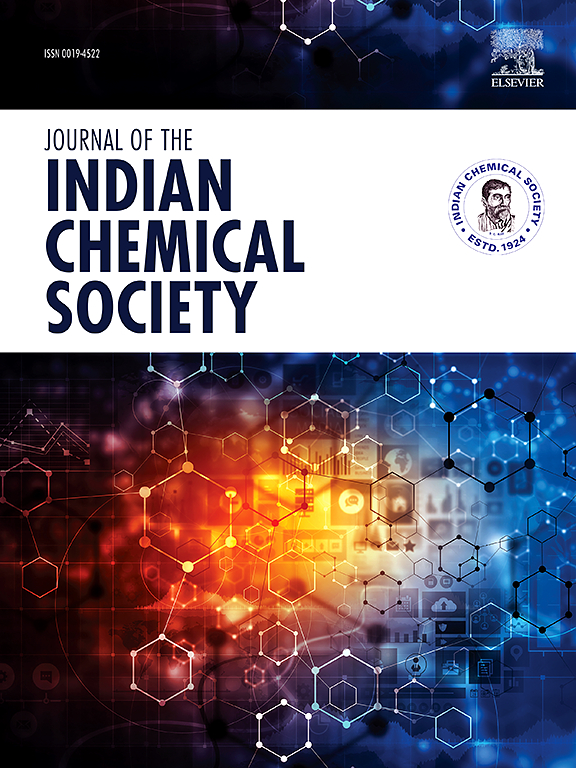Synergistic effect of Sr-doping on ZnO nanoparticles for enhanced photocatalytic activity and antimicrobial activity
IF 3.2
4区 化学
Q2 CHEMISTRY, MULTIDISCIPLINARY
引用次数: 0
Abstract
In this study, we present a highly efficient heterostructure photocatalyst achieved by doping Sr into ZnO nanoparticles, leveraging the synergistic effect of Sr on the properties of ZnO. The single-phase nature and purity of the produced Sr/ZnO nanoparticles are confirmed by FTIR and X-ray diffraction spectra. According to the Scherrer equation, the crystallite size decreases from 24 nm to 15 nm when Sr is doped. With the addition of Sr, the optical band gap, as measured by Tauc plots, marginally moves from 3.13 eV to 2.96 eV. Field emission scanning electron microscopy mapping and energy dispersive X-ray spectroscopy show that Sr is uniformly distributed throughout the ZnO matrix. The morphological characteristics of the synthesized nanoparticles were examined using FESEM, with grain size measurements confirming their nanostructure. The ZnO/Sr nanoparticles had stronger antimicrobial properties toward gram-positive (Enterococcus), gram-negative (Salmonella typhi) as well as fungal (Candida parapsilosis) pathogens. The Sr/ZnO heterostructure demonstrates an excellent photocatalytic performance, achieving 85 % decomposition of methylene blue under sun light exposure for 120 min. Kinetic analysis of the photocatalytic process indicates that the rate constant for the heterostructure is 2.4 times higher than that of pure ZnO. Additionally, the heterostructure shows minimal loss in photocatalytic efficiency (only a 6 % decrease) after 3 cycles, confirming its reusability. These results highlight the Sr/ZnO heterostructure's potential as a sustained photocatalyst and being suitable for biological applications.

求助全文
约1分钟内获得全文
求助全文
来源期刊
CiteScore
3.50
自引率
7.70%
发文量
492
审稿时长
3-8 weeks
期刊介绍:
The Journal of the Indian Chemical Society publishes original, fundamental, theorical, experimental research work of highest quality in all areas of chemistry, biochemistry, medicinal chemistry, electrochemistry, agrochemistry, chemical engineering and technology, food chemistry, environmental chemistry, etc.

 求助内容:
求助内容: 应助结果提醒方式:
应助结果提醒方式:


